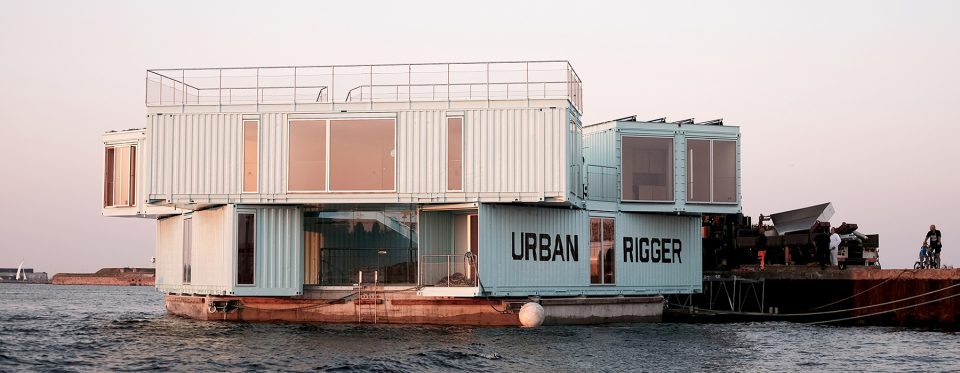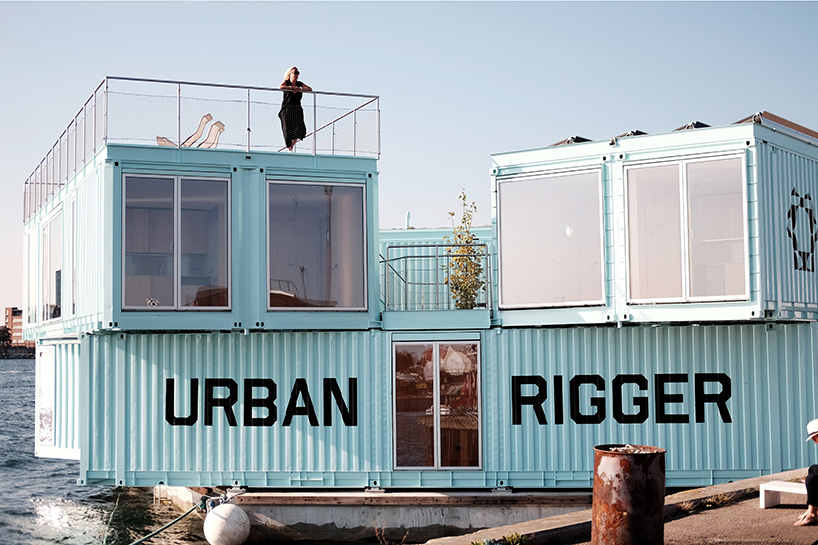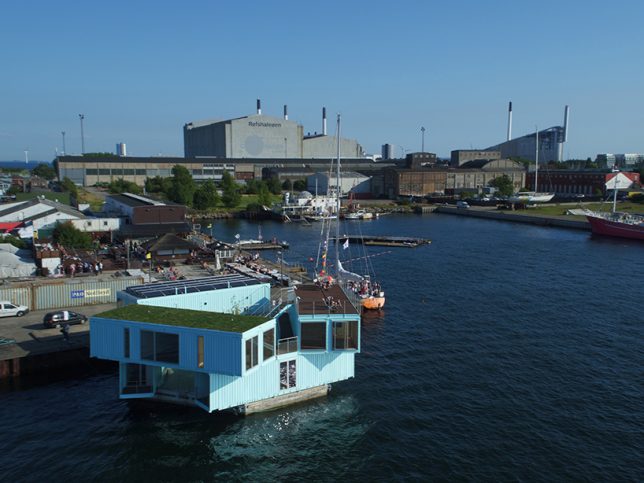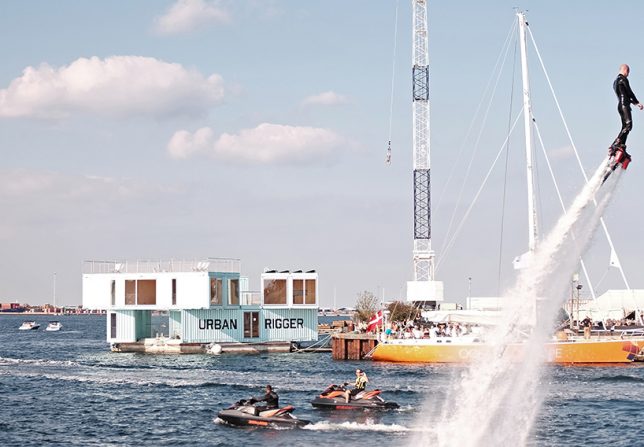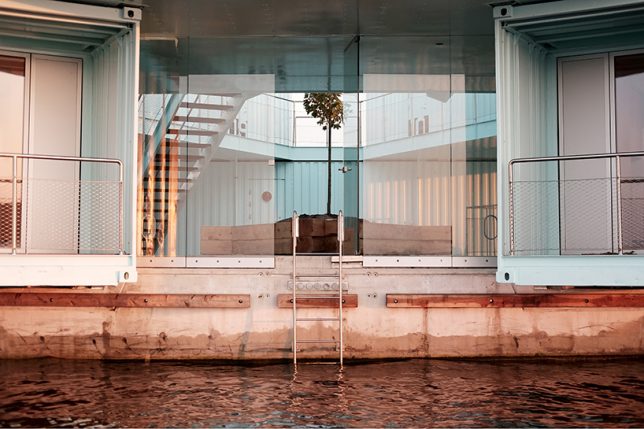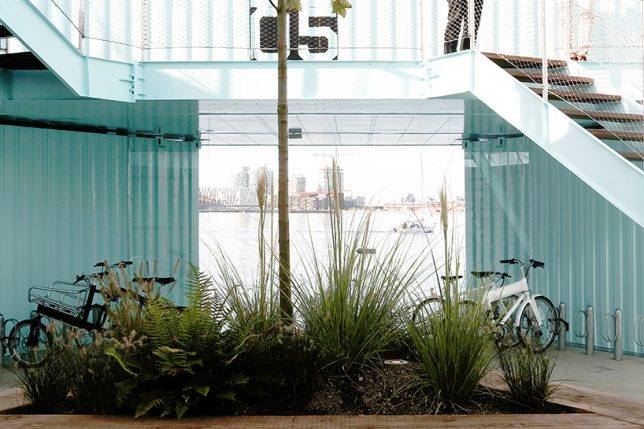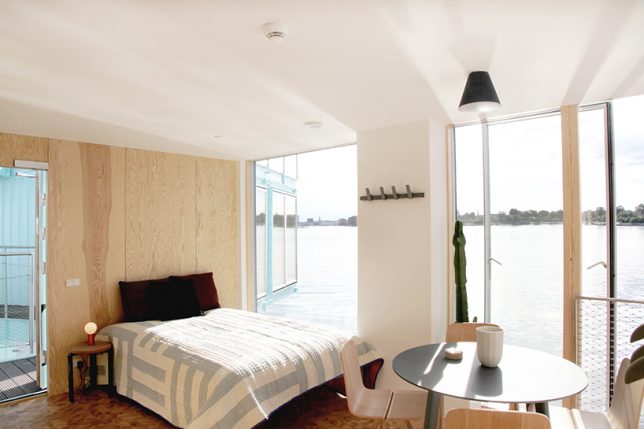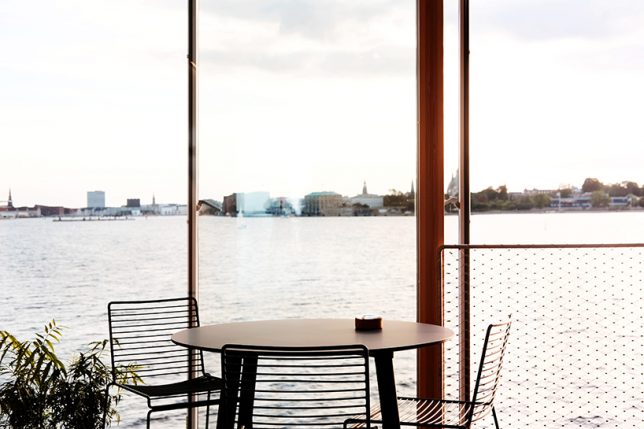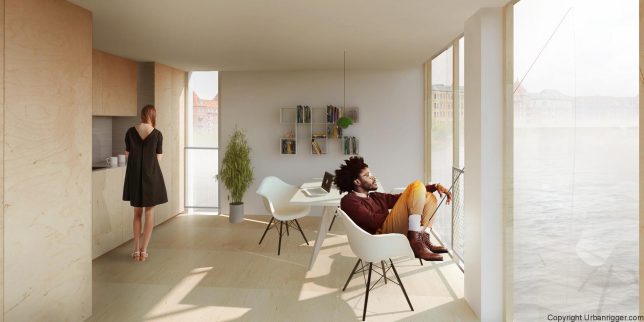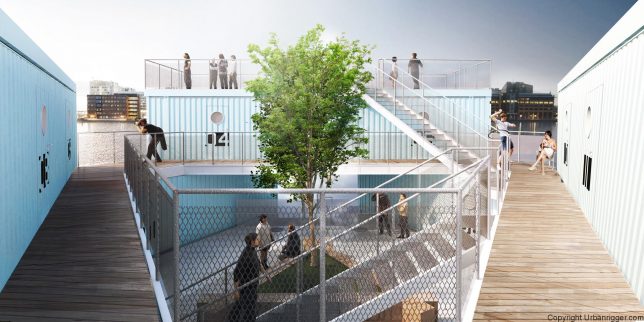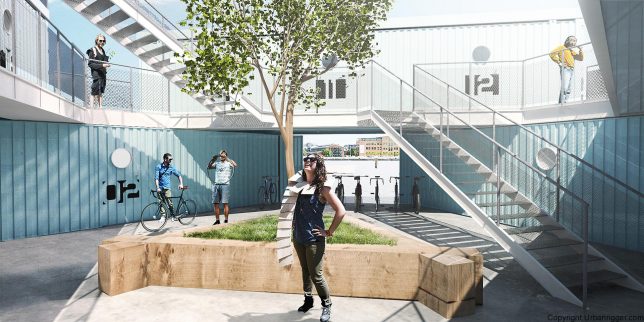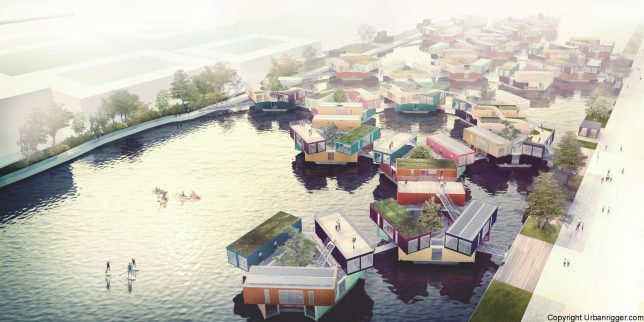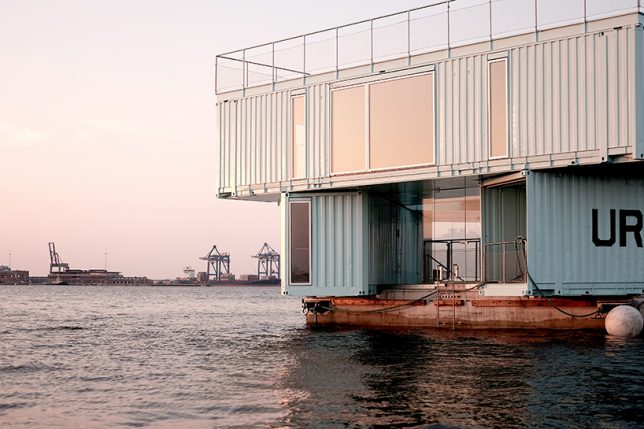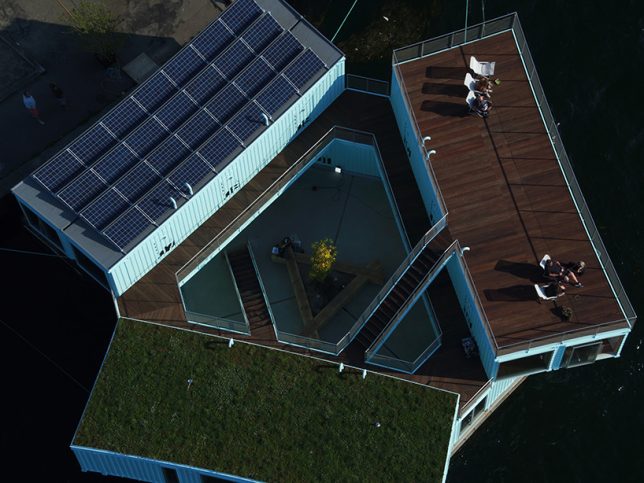This hexagonal floating student housing complex made of stacked reclaimed shipping containers is better than any dorm you could hope to live in. ‘Urban Rigger’ by Bjarke Ingels (BIG) creates a sustainable solution to the pressing need for additional accommodations for students in the city, providing 15 living spaces arranged around an internal courtyard. Completely carbon-neutral, the structures are solar-powered and make use of hydro source heating and low-energy pumps, and the first unit opened to the public on September 21st.
Each apartment is available to college students at $600 per month and includes a private bedroom, bathroom and kitchen. Occupants get access to the courtyard as well as a kayak landing, bathing platform, barbecue area and roof terrace. The pontoon basement features storage zones and fully automated laundry. It’s a pretty sweet deal for students, who get to gaze out of giant windows at the sunset every evening and enjoy a water-centric lifestyle that most adults only dream about.
Making use of the harbor ensures that students get to live close to the school, instead of far outside the city, where most affordable units are located. Eventually, BIG plans to create entire communities made up of multiple structures.
“There are few strategies that allow cities to expand,” the architects explain. “Yet, Copenhagen’s harbor remains an underutilized and underdeveloped area at the heart of the city. By introducing a building typology optimized for harbor cities we can introduce a housing solution that will keep students at the heart of the city.”
“Meanwhile, the standardized container system has been developed to allow goods to be transported by road, water or air, to anywhere in the world in a complex network of operators at a very low cots. By making use of the standard container system we are offered the framework of extremely flexible building typology.”
“By stacking 9 container units in a circle, we can create 15 studio residences which frame a centralized winter garden; this is used as a common meeting place for students. The housing is also buoyant, like a boat, so that can be replicated in other harbor cities where affordable housing is needed, but space is limited.”
